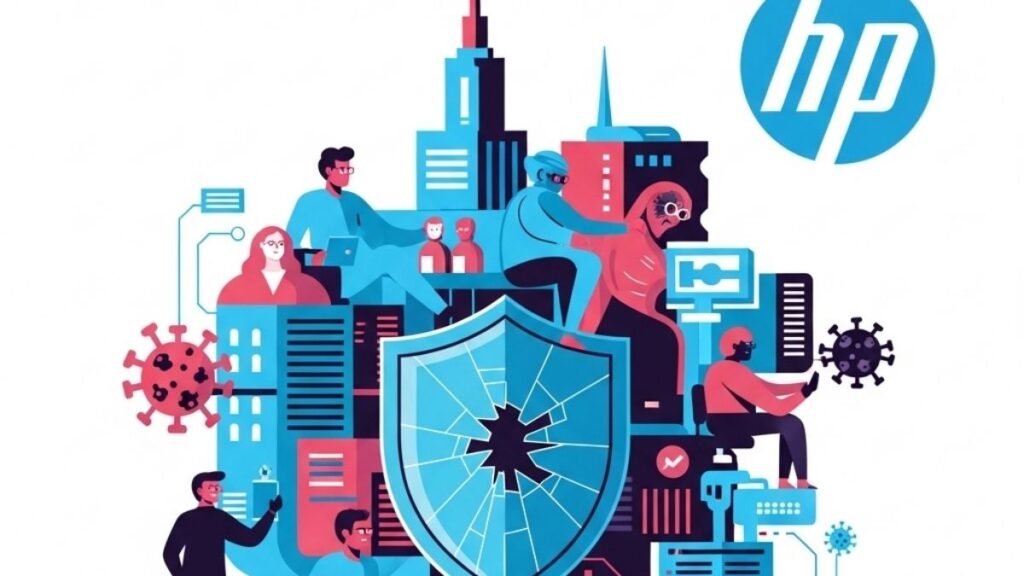IT and cybersecurity are fundamental components of any company’s data security plans. Although used interchangeably, there are differences between how these terms are defined and what they involve.
IT (information technology) security refers to protecting data and information systems from unauthorized access. It involves implementing processes that prevent the misuse, modification, or theft of sensitive company information. On the other hand, cybersecurity covers the protection of data on the internet- particularly from hackers and other cybercriminals.
You can think of cybersecurity as a subset of IT security. While cybersecurity deals with protecting data from internet hacks, IT security is the overarching process that covers how company data is handled daily. Your business will need to develop robust risk management plans for both IT and cybersecurity. Indeed, this is the best way of preventing data loss or online threats.
Understanding IT Security
IT security is the process of designing and implementing measures aimed at protecting company data. This data may be in different forms, including electronic and paper.
With businesses handling large quantities of data daily, there’s a need for you to develop systems and processes that keep this information safe. For example, your company may collect, process, and store the credit card numbers, addresses, and names of customers. To prevent this data from unauthorized access, you’ll need a data security framework that provides guidelines regarding how such information is handled.
Therefore, IT security aims to protect information from theft, misuse, unauthorized access, and modification. The scope of IT security is broad, and it includes steps that also protect your data across the internet. This is why cybersecurity can be considered a subset of IT security.
Your IT security plan will cover all data created or collected by the company. This protection will include (and extend beyond) the internet. For example, IT security also covers physical data, in-house systems, and other channels that don’t include the cybersecurity space.
You can think of IT security as the first step towards safeguarding company information from ending up in the wrong hands. IT security also ensures the quality, confidentiality, and accessibility of data when needed.
Defining Cyber Security
Cybersecurity refers to protecting company data from threats that may occur on the internet. As more businesses rely on cloud computing, networks, and servers, large quantities of data may be exposed to threats from internet hackers. Cybersecurity involves the development and implementation of systems that can repel such risks.
Cybersecurity protects electronic data that’s being transmitted across the internet. By using technologies, data analysis, and preventative techniques, professionals in this field ensure that you don’t fall victim to online threats. There are many different risks that a company might face online. From malware to phishing and SQL injections, such cyber-attacks may expose your data to hackers. This is why implementing a cybersecurity plan is critical for your business.
Even as cybersecurity only covers data being transmitted online, it involves multiple aspects of a company’s daily operations. For example, every email your employees send (or every attachment they open) may expose your business infrastructure to outside threats. Internet hackers are also developing sophisticated techniques that affect how you should download, share, or utilize company data.
A cybersecurity plan may involve a combination of network risk assessment, password management, data encryption, and data security policies.
Important differences between IT security and Cybersecurity
In practice, the roles between IT and cybersecurity professionals will overlap. Both approaches have the end goal of protecting sensitive company data- through a combination of technologies and physical processes.
However, important differences apply to how each data security process is carried out. Some of those differences include:
The Scope of Data Covered
IT security is a broad data security approach that encompasses both electronic and physical data. It involves how files are printed, shared, and stored in cabinets, while also outlining procedures for the handling of electronic data.
On the other hand, cybersecurity only covers electronic data being transmitted across the internet. A cybersecurity plan will outline policies and procedures aimed at protecting data from online hacking.
The Approach
The ultimate goal of IT security is to ensure the confidentiality, availability, and integrity of company information. Therefore, IT security is an overarching approach that covers how all business data is collected, stored, shared, and processed.
Cybersecurity protects sensitive data from unauthorized access across online channels. The primary approach to cybersecurity involves assessing risks, developing a risk assessment matrix, analyzing those risks, and implementing a plan for risk management.
The Techniques Implemented
IT and cybersecurity also differ in how they’re implemented. First, IT security is focused on multiple channels that extend beyond cyberspace. IT security may cover physical access to various rooms in your business- and determine who can open or modify specific files. An IT security plan may also stipulate guidelines for collecting data from customers (whether electronic or physical), and how employees should handle such data.
Cybersecurity is mainly a preventative and risk management strategy. The techniques implemented include password protection, data encryption, and network security to prevent online hacks. As more businesses now rely on the internet to fuel their daily operations, cybersecurity has become a top concern. Keeping sensitive data safe online is a critical aspect of any company’s overall data security strategy.
Both IT and cybersecurity are focused on preventing risks that your company data might be exposed to. This is why risk assessment, analysis, and management are both critical when it comes to keeping your data safe. Regardless of industry, you’ll need to examine your current environment, systems, and processes before implementing IT or cybersecurity.
- The Role PCI-DSS Plays in Security - January 21, 2020
- Your Quick Guide to SOC 1, 2 and 3 - December 13, 2019
- Using a Risk Assessment for a SaaS Company - November 24, 2019




Nice and well written article. But I believe you mean “Information Security” and not “IT Security”.
More than that, defining Cybersecurity as protection against threats emanating from the Internet is a pretty narrow definition. In previous years we used to refer to Cybersecurity as a superset including all of IT / Information Security + Operational Technology (OT) which used to include all kind of PLC / ICS / SCADA and related components. I am not sure if you have considered that in your current definition.
If you look at modern trends of intersection between the Internet and the OT, you have all of IOT, Smart X (technology/ city/ Government / Home …) that still needs to be secured from threats (both from the Internet and offline). So you might want to include that under “Cybersecurity”.
Somehow the cynical me always felt that Cybersecurity was just a new nomenclature for Information Security. Old wine new bottle and stuff. But that’s just me 🙏
Having said this, your article is very well written and treats the differences in multiple fronts. Kudos for it.